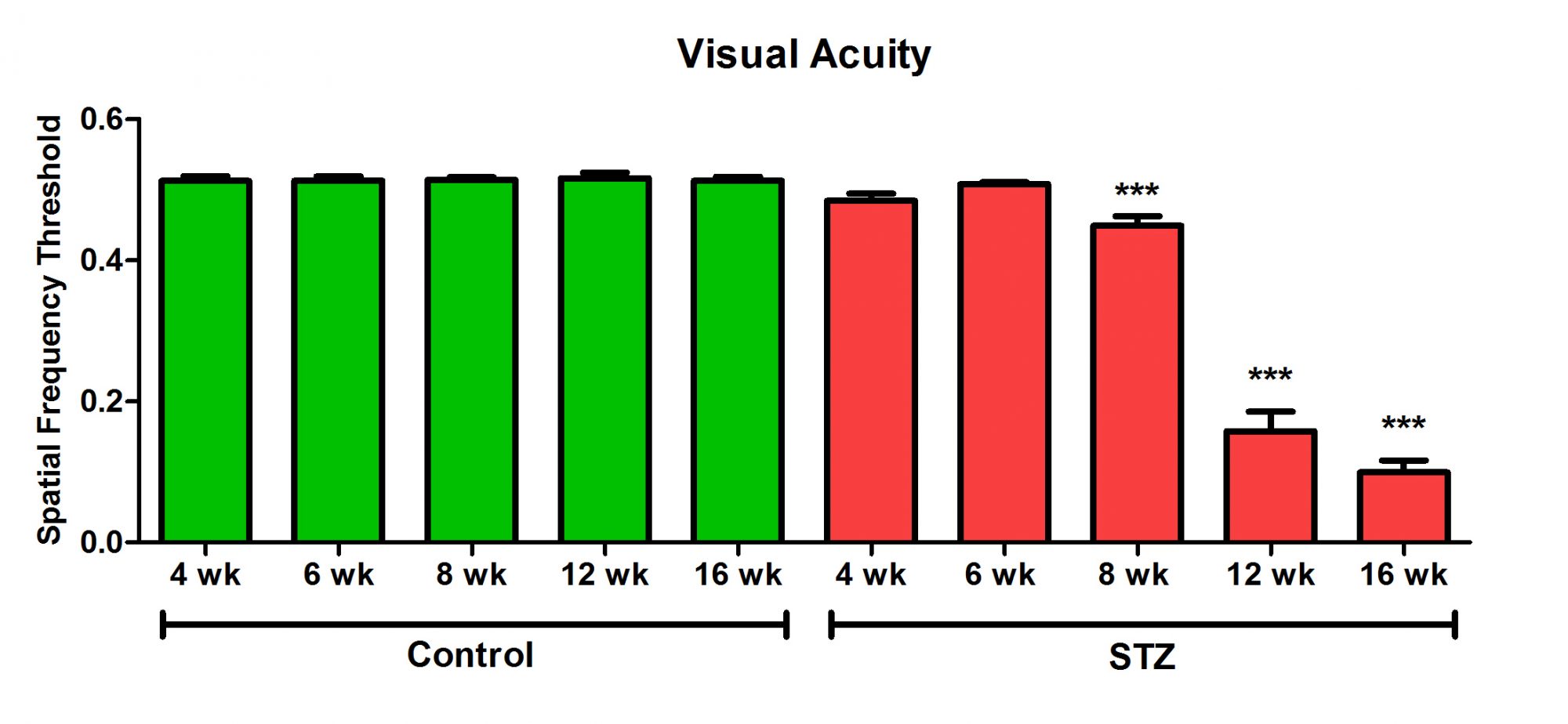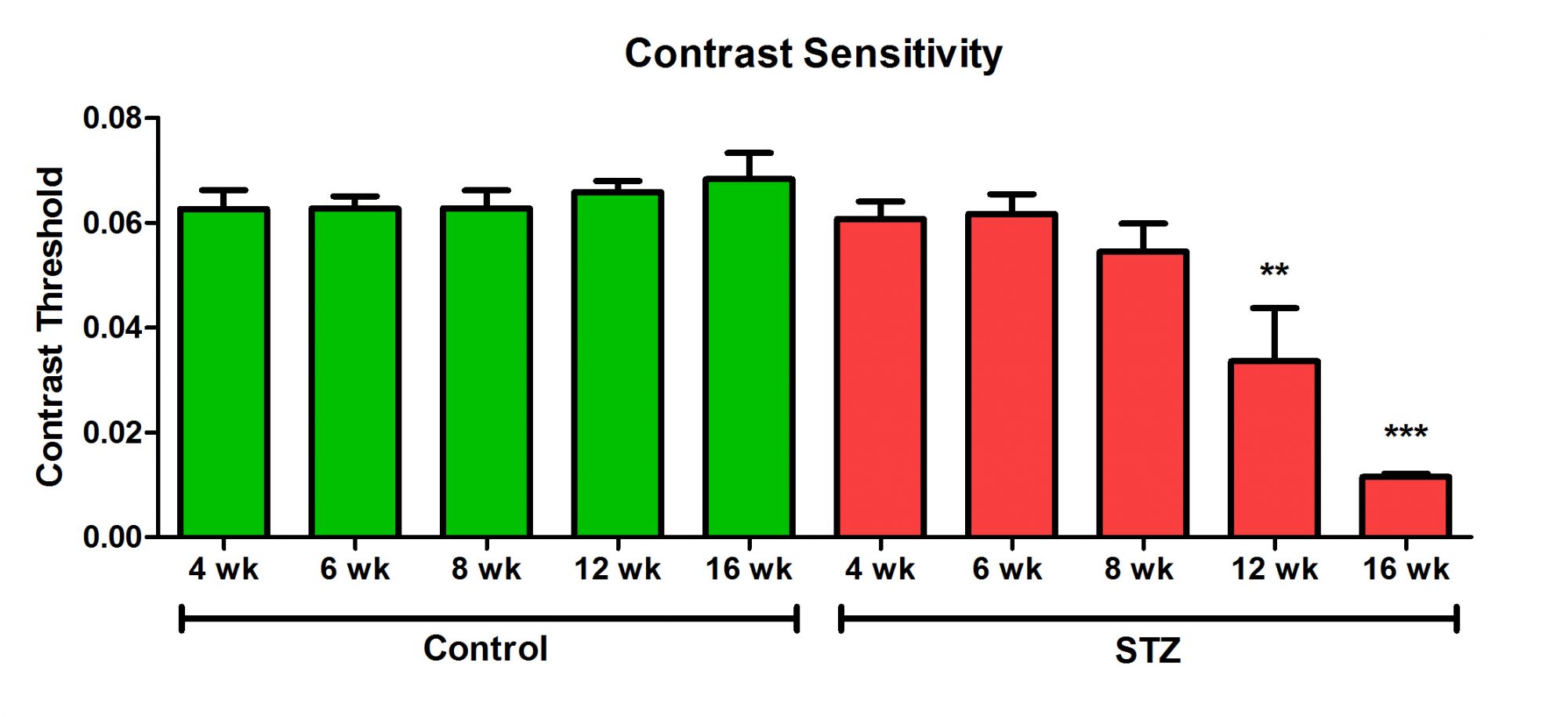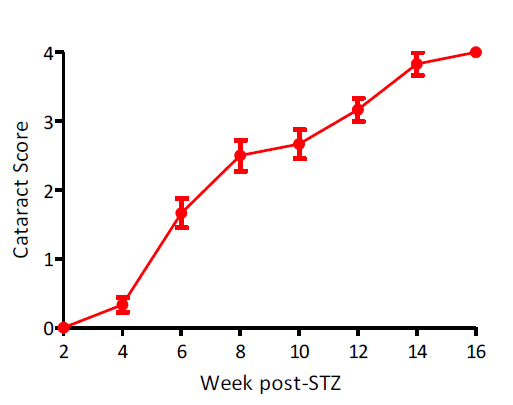STZ-induced Diabetic Retinopathy
Streptozotocin (STZ) is a small molecule that causes depletion of the pancreatic islet cells following systemic administration to rodents. The islet cell death causes a loss of insulin production and subsequent dysregulation of blood glucose levels leading to hyperglycemia within days. This model has been used to study inflammation, vascular pathology, and signaling pathways involved in the pathogenesis of Diabetic Retinopathy and Diabetic Macular Edema. The team at EyeCRO has shown that this model presents with an ideal phenotype for screening the therapeutic efficacy of test agents to treat Diabetic Retinopathy and Diabetic Macular Edema. Beginning at 8 weeks following induction of Diabetes with STZ, there is a significant and progressive loss of visual acuity and contrast sensitivity which can be rescued by subcutaneous implant of a slow-releasing insulin pellet. Since the primary endpoints accepted by regulatory agencies for human clinical trials are focused on quantitative measurements of visual acuity and contrast sensitivity, this is an excellent model for testing the activity of therapeutic agents to prevent diabetic vision loss. The model is also useful for evaluating the effect of an agent on Diabetes-induced cataracts.




